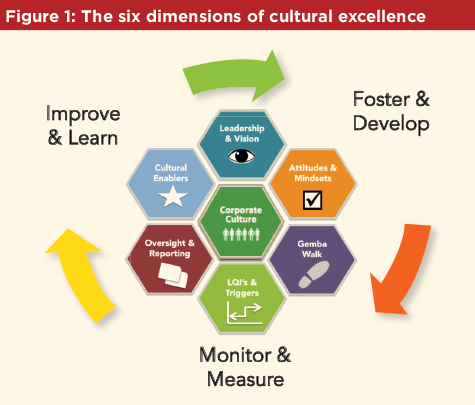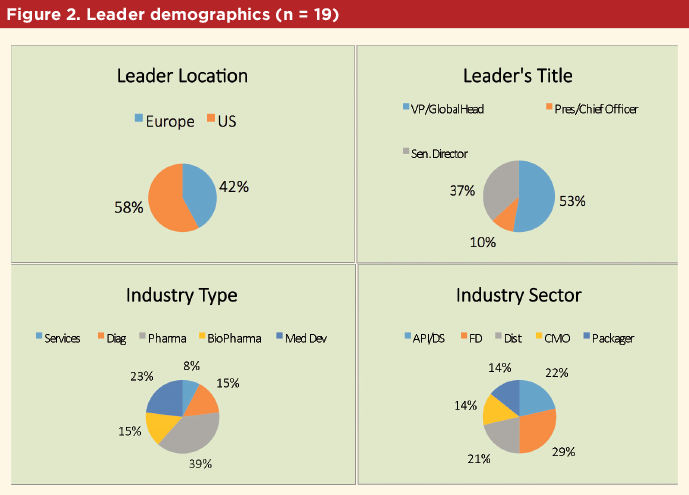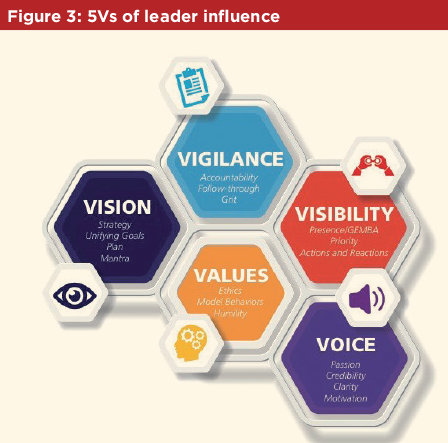How Leader Actions and Behaviors Influence Quality Culture

Shaping Excellence: How Leader Actions and Behaviors Influence Quality Culture Part 1
Quarterly Report on Quality Culture
This article was published in the November/December 2016 edition of Pharmaceutical Engineering® magazine in the Quarterly Report on Quality Culture. In ISPE’s Six Dimensions of Cultural Excellence framework, the first dimension addresses leadership and vision, and explores the leader’s role in defining, achieving, and sustaining cultural excellence in pharmaceutical manufacturing. In this article, Erika Ballman, lead of the Leadership & Vision subteam, describes the process her team used to find shared leadership traits, behaviors, and actions attributable to positive culture. This year the team embarked on a series of groundbreaking "Shaping Excellence" interviews with senior quality leaders from across the pharmaceutical and medical technology industries. A summary of the team’s findings was first introduced at the 2016 ISPE/FDA/PQRI Quality Manufacturing Conference in June 2016. Here, a more comprehensive range of leader insights are shared.
The Importance of Quality Culture
The degree to which quality is embedded in an organization’s culture can mean the difference between success and failure.1 —François Sallans, Johnson & Johnson
The relationship between corporate quality culture and operational excellence continues to be actively explored. Indeed, ISPE’s Quality Metrics Pilot Program Wave 2 findings, presented in June 2016, indicate a statistically significant correlation between the quality culture survey results and the performance metrics of right first time, deviation recurrence rate, and recalls.2 It is logical that companies benefit when they emphasize excellence in the way their work is performed, but is a corporate culture of excellence or "quality culture" substantive enough to be communicated or measurable in a way that can be improved? Moreover, how do industry leaders contribute to and help shape quality culture? Are there best practices that can assist and enable a collective mindset to drive toward improving quality? The ISPE Quality Culture team, co-led by Matt Pearson, Senior Director, Genentech, a member of the Roche Group, and Nuala Calnan, PhD, Dublin Institute of Technology, asks these questions in an ongoing effort to develop practical approaches, practices, and tools the pharmaceutical industry can use to assess and improve cultural excellence. The Quality Culture team’s road map is the cultural excellence framework, which consists of six dimensions that are integrated yet studied independently for their impact on quality culture (Figure 1).3

"Shaping Excellence" Interviews
The role of leadership in fostering and developing a vision of quality forms the starting point of the Six Dimensions framework.3 —Nuala Calnan, Dublin Institute of Technology
The Leadership & Vision (L&V) subteam focuses on establishing and engendering a vision of quality through leader-led behavior. Consisting of ISPE members from different pharmaceutical companies and sectors, the L&V subteam developed an ambitious research concept to explore best practice leader-led behavior and ask valued leaders to comment on cultural excellence to find commonalities. Through one-on-one interviews, intended to be conversational and informal, industry-respected leaders shared what they believe are the most important actions and behaviors can leaders take to shape quality culture. Over several weeks in spring 2016, 19 industry leaders representing various industry sectors and geographical regions were interviewed, guided by questions developed by the L&V subteam. These leaders also represented executive levels (vice president, global head, senior director) of corporate leadership, collectively contributing hundreds of years of shared industry leadership experience. These interviews gave the L&V subteam key insights into shared thoughts and unique perspectives, and produced a research data set that included over 18 hours of audio files with more than 125 transcript pages. Figure 2 outlines the demographics of the leaders and their organizations.

Defining a Culture of Excellence
Leaders were first asked: "How do you define a culture of excellence? What do you look for? What do you measure?"
There is a bottom-up and a top-down connection. It comes very much from the behaviors, that the behaviors are correct. There is strong support from senior management, but at the same time there is a high level of engagement at the shop floor level. —Joseph P. Murphy, Roche Ireland Ltd.
Employee and employer have a mutually beneficial relationship that allows the individual to feel like he or she is performing and contributing at their best. It is a win-win situation. —Allen Napetian, Genentech, a member of the Roche Group
The organization’s purpose and the principles govern not only the work we do but how we engage with each other. In terms of a culture of excellence, I look for clarity in principles and purpose, and I look for it to drive the work and shape the experiences that we have. —Mike Vallender, Emergent BioSolutions
Clear themes emerged in response to these opening questions related to the organizational environment, leaders, and employees:
- The organization has a sense of purpose in which employees are elevated beyond themselves.
- Leaders and employees are engaged and have the right mindset about product quality, service, and patient safety.
- An emphasis on quality drives predictable and improved outcomes, and not solely compliance expectations.
- Leaders articulate clear goals and model their expectations.
- Employees understand the organization’s purpose, goals, and expectations and are self-motivated to reach them.
- The organization promotes continuous improvement and constant learning through words and actions.
- Leaders and employees demonstrate behaviors that enable and drive business success.
- Employees recognize the importance and value of their work product.
- When problems arise, there is a focus on problem-solving, not finger pointing.
A corporate culture espousing these ideals would prove equally beneficial for companies, regulators, employees, and patients, but how can it be achieved? Furthermore, how can it be sustained? We examined the industry leaders’ responses to determine how we might shape this type of culture.
Leader 5Vs
When considering the role of the leader in influencing culture, it is critically important to focus on behavior and actions. Interviewed leaders acknowledged the key role these two elements have in the site and company culture. There was no mention of external forces—no "silver bullet" solutions—but an implicit and internal attitude, shaped by the leaders’ focus and demonstrated commitment to excellence. While leaders must set the tone and vision and provide enabling tools, there was broad agreement that cultural excellence cannot be achieved without an engaged and motivated workforce. It is not sustained, however, without the support of leadership and an ongoing investment in people, improvements, facilities, new capabilities, and quality and business systems. It emerged that leading with "head, heart, and hands" requires connections between technical ability, emotional intelligence, and principle-based values. Based on the findings and insights gained, the team created a well-rounded leader model entitled the "Leader 5Vs" (Figure 3) that are associated with positive leader influence on quality culture.

The 5V categories are:
- Vision: Strategy, unifying goals, game plan, company mantra or credo, and the desired state
- Values: Guiding principles, ethical conduct and expectation, humility, empathy, and patient focus
- Voice: Passion, credibility, authenticity, and clarity, as well as the ability to articulate the vision, and inspire and motivate others
- Vigilance: Ability to drive accountability, determination, grit, focus, discipline, and follow-through
- Visibility: Leader presence, what he/she gives priority/time to, what he/she reacts and responds to
Continue to How Leader Actions and Behaviors Influence Quality Culture Part 2. Want to learn more about enhancing the Quality Culture at your company? The 2017 ISPE Conference on Quality Culture and Quality Metrics will provide a collection of practical, powerful tools and a comprehensive behavior-based approach for improving quality culture as a means of delivering enhanced quality outcomes. The conference will also provide the latest data and insights for operationalization of quality metrics across the supply chain.
- 1Sallans, F. "Walking the Quality Culture Talk." Pharmaceutical Engineering 35, no. 5, October 2015.
- 2 International Society for Pharmaceutical Engineering, "ISPE Quality Metrics Initiative: Quality Metrics Pilot Program Wave 2 Report," June 2016.
- 3 a b Calnan, N. "Cultural Excellence: Ensuring That ‘Culture of Quality’" Is More Than Just a Slogan." Pharmaceutical Engineering 36, no. 1 (January/February 2016):57–60


